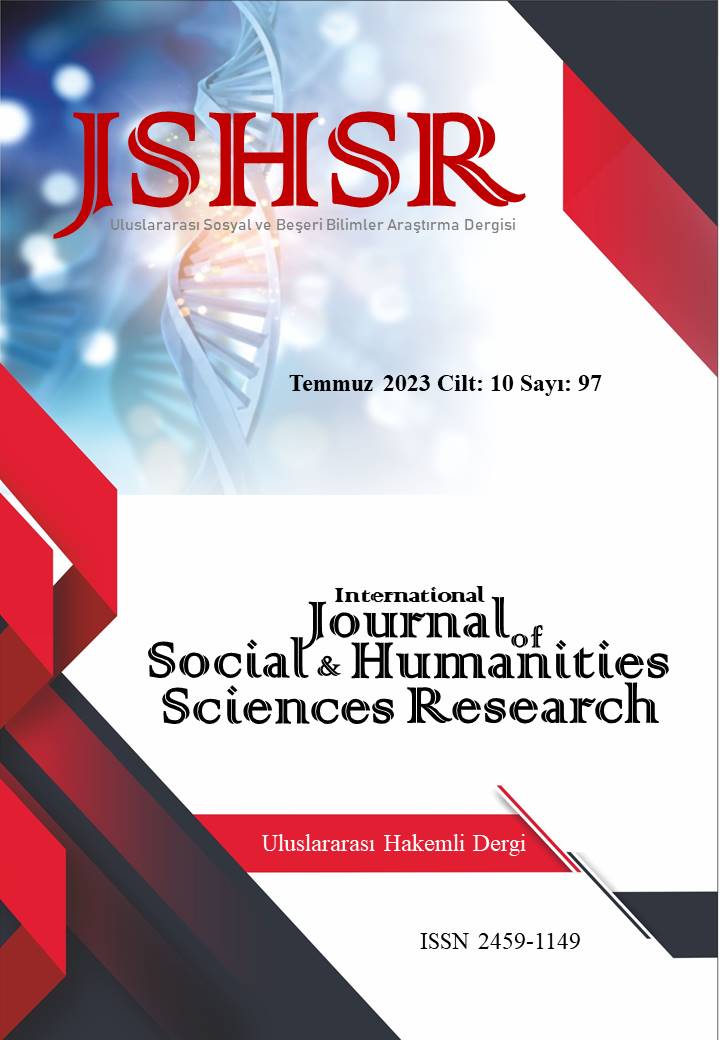Characteristic Features of One-Piece Yallis Performed in Nakhchivan
DOI:
https://doi.org/10.5281/zenodo.8196743Keywords:
Dance, Yalli, Nakhchivan, One-piece, “Gaz-gazi”Abstract
The people of Azerbaijan, having an ancient and rich culture, have preserved their cultural heritage until today. Gobustan and Gamigaya which are among the first human settlements, depict dance scenes in rock painting, which is proof that life has existed here since ancient times. Mane depictions in rock paintings confirm its existence thousands of years ago. Among the paintings in Gamigaya located in the Nakhchivan region, images of dance ceremonies have a special place. A synthetic form of art, yalli combines several arts such as instrumental, vocal music, and performance. Azerbaijani yalli is manifested in 3 types: vocal, vocal-instrumental and instrumental. Vocal, which is performed only with the accompaniment of a song. It includes “Hakhishtas” and “Gulumhey”. İts mainly performed by women. Vocal-instrumental and instrumental yallis are performed by both men and women.
There are 1, 2, and 3 types of yallis. One-part plays are played at a pace appropriate to their character and content. In some one-part yalli the dance starts at a relatively low or medium pace but is not divided into parts, although it speeds up later. The same musical material develops. “Bandi”, “Dalan”, “Dallo”, “Dikdabani”, “Afsari”, “Goychamani”, “Hoynare”, “Kafeyi”, “Gaz-gazi”, “Ganimo” are among the part yalli performed in Nakhchivan region.
The theoretical analysis of one-part yallis shows that the time signature is mostly 6/8 or 3/8, they are generally played in allegro or allegretto tempo, the range of the melody is quite small- from three tones to five voices. Rast and Shur's series are used more frequently in these types of yalli. Some of these yallis are performed by the people of our modern times at festivals and weddings.
References
Ahmedov, B. (2015). Etimologiya lüğeti. Bakı.
Алекперова, А. (1994). Хороводные танцы яллы Нахичеванской зоны. Диссертация на соискание ученой степени кандидата искусствоведения, Баку.
Behmenli, R. (2021). Azerbaycan qedim reqs havaları. Bakı.
Bünyadov, T. (2007). Azerbaycan etnoqrafiyası. III. cild, Bakı.
Hesenov, K. (1983). Qedim Azerbaycan xalq reqsleri. Bakı.
Mammadova, G. (2022). Azerbaycan’daki düğün törenlerinin çeşitliliği bağlamında Nahçıvan bölgesinin düğün gelenekleri. Rast Müzikoloji dergisi,10(3),329-344.
Mammadova, G. (2023). Azerbaycan türkülerinin Türkiye’nin Iğdır ve Kars yörelerinde icra özellikleri. Türk Müziği Dergisi, 3(1), 1-19.
Memmedli, E. Memmedli K. Naxçıvan-Şerur el halayları. Naxçıvan, 2015. 275 s.
Nebiyeva, F. “Halay” reqslerinin not neşrlerinin etnomusiqişünaslıq ehemiyyeti. Konservatoriya jurnalı, 2019, №3 (45). S.35.
URl1 https://www.google.com/search?sxsrf=AB5stBiKbx1io2G5WlvP3md1EbBCConOMw:16886503 18399&q=qobustan+qaya+r%C9%99sml%C9%99ri&tbm=isch&sa=X&ved=2ahUKEwjG24LTmPr_AhWzSvEDHf
URl2 https://www.google.com/search?q=%C5%9F%C9%99rur+xalq+yall%C4%B1+ansambl%C4%B1& tbm=isch&ved=2ahUKEwikqNSmnfr_AhVbFBAIHV0jDKYQ2
Downloads
Published
How to Cite
Issue
Section
License
Copyright (c) 2023 INTERNATIONAL JOURNAL OF SOCIAL HUMANITIES SCIENCES RESEARCH

This work is licensed under a Creative Commons Attribution 4.0 International License.


